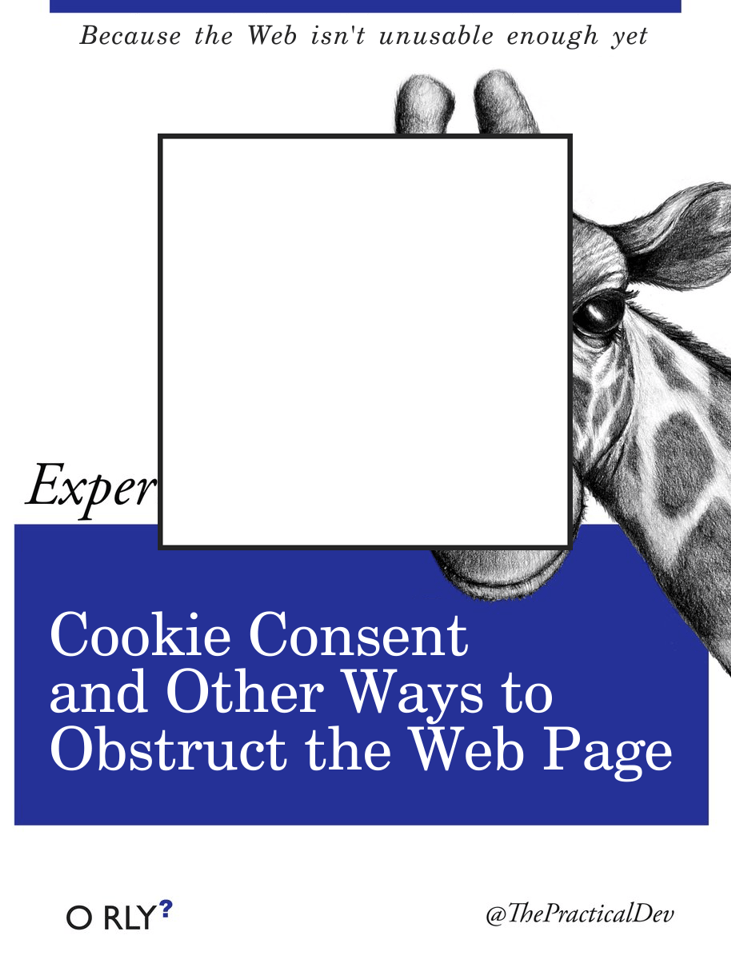
In the grand tapestry of the World Wide Web, a realm teeming with information and digital splendor, there emerged a curious and somewhat vexing challenge, known far and wide as Cookie Consent. This phenomenon, born from the noblest of intentions to protect privacy and inform users, quickly morphed into a labyrinthine ordeal, turning the simple act of web browsing into a Herculean trial of patience and perseverance.
Our tale unfolds in the bustling city of UserExperienceopolis, a metropolis famed for its sleek design and intuitive navigation. Here, web developers and designers worked in harmony to create sites of unparalleled beauty and functionality, ensuring that every visitor's journey was both enlightening and effortless.
Enter our protagonist, Jamie, a web developer with a keen eye for design and a heart full of dreams. Jamie's latest project was a website for Arcadia, a utopian online community designed to be a haven of content and interactivity. However, as Jamie soon discovered, even utopias must grapple with the realities of the digital age, including the omnipresent specter of Cookie Consent dialogs.
Determined to comply with the laws of the land while preserving the sanctity of the user experience, Jamie embarked on a quest to integrate a Cookie Consent mechanism that was both informative and unobtrusive. The journey was fraught with peril, for the landscape of UserExperienceopolis had become cluttered with pop-ups, banners, and overlays, each vying for attention and obstructing the content that visitors sought.
As Jamie toiled, it became clear that Cookie Consent dialogs had evolved into a hydra of complexity, each attempt to simplify or streamline the process only spawning new challenges. For every user who appreciated the transparency, another lamented the interruption; for every smooth animation, a page load slowed to a crawl.
Undeterred, Jamie sought the wisdom of the Elders of UX, sages who had watched the rise of the internet from its earliest days. From them, Jamie learned of ancient principles long forgotten, of balance, clarity, and respect for the user's journey. Armed with this knowledge, Jamie crafted a Cookie Consent experience that was both a marvel of minimalism and a paragon of privacy advocacy.
The dialog was designed to be as ethereal as a whisper, appearing not as a blockade but as a gentle guide, offering clarity without clutter. Options were presented not as a labyrinthine maze but as a clear choice between privacy and personalization. And most importantly, the sanctity of the user's journey was preserved, the content of Arcadia shining through the veil of compliance.
As the website launched, the citizens of UserExperienceopolis watched with bated breath. To their delight and surprise, the integration of the Cookie Consent mechanism into Arcadia was heralded as a triumph, a beacon of hope in a sea of intrusive dialogs. Visitors flowed through the gates of Arcadia unimpeded, their experience enriched rather than encumbered by the act of consent.
Thus, the tale of "Cookie Consent and Other Ways to Obstruct the Web Page" became a legend in UserExperienceopolis, a reminder that even in the face of legal and technical challenges, the principles of good design could triumph. Jamie's journey taught that with creativity, empathy, and a deep respect for the user, it was possible to navigate the complexities of the modern web, turning obstacles into opportunities for innovation and connection.
And so, in the ever-evolving saga of the internet, the story of Cookie Consent serves not as a lament but as a lesson, a call to arms for developers and designers alike to champion the cause of the user experience, ensuring that the web remains a place of discovery, delight, and, above all, respect for those who journey through it.